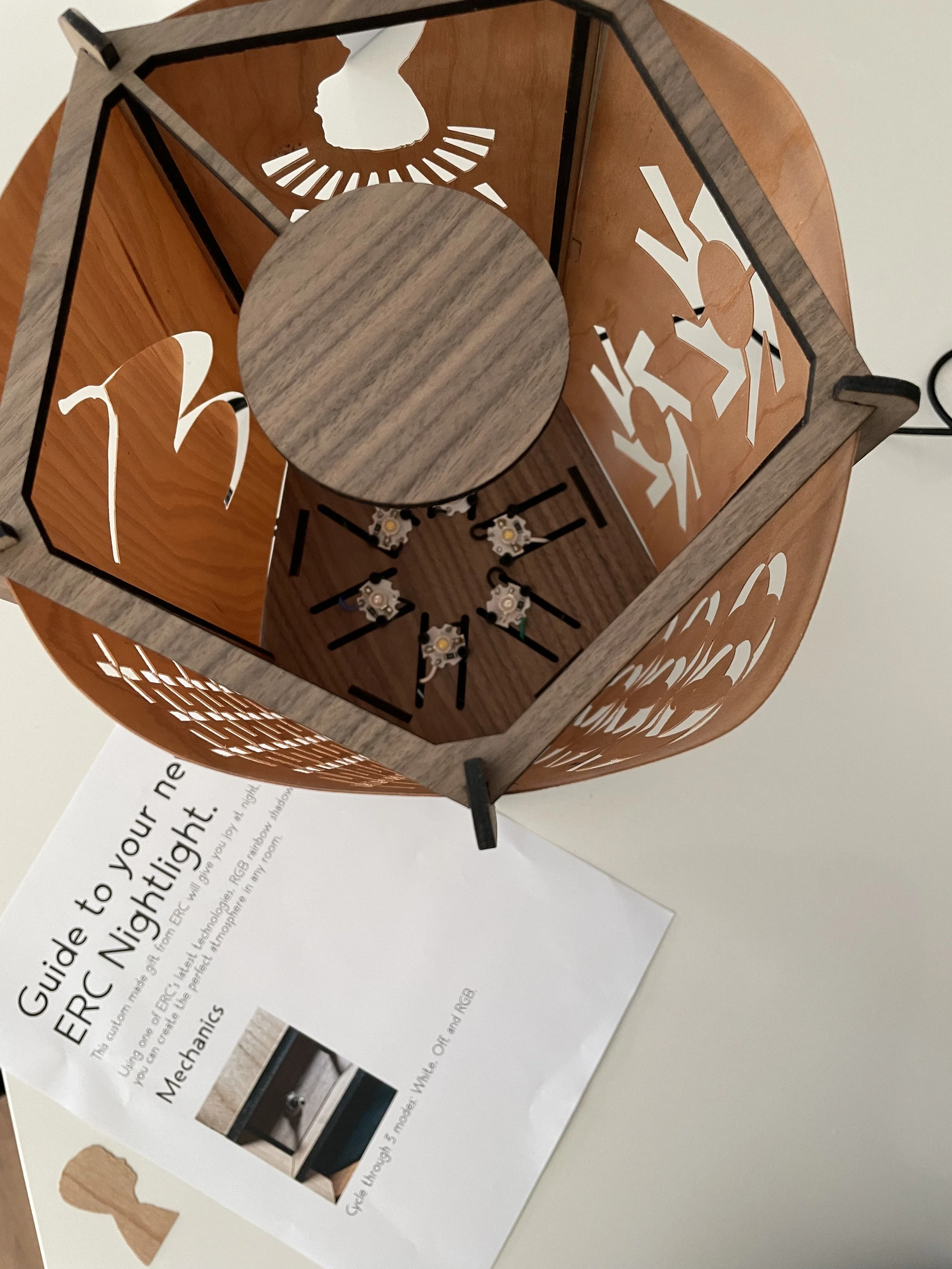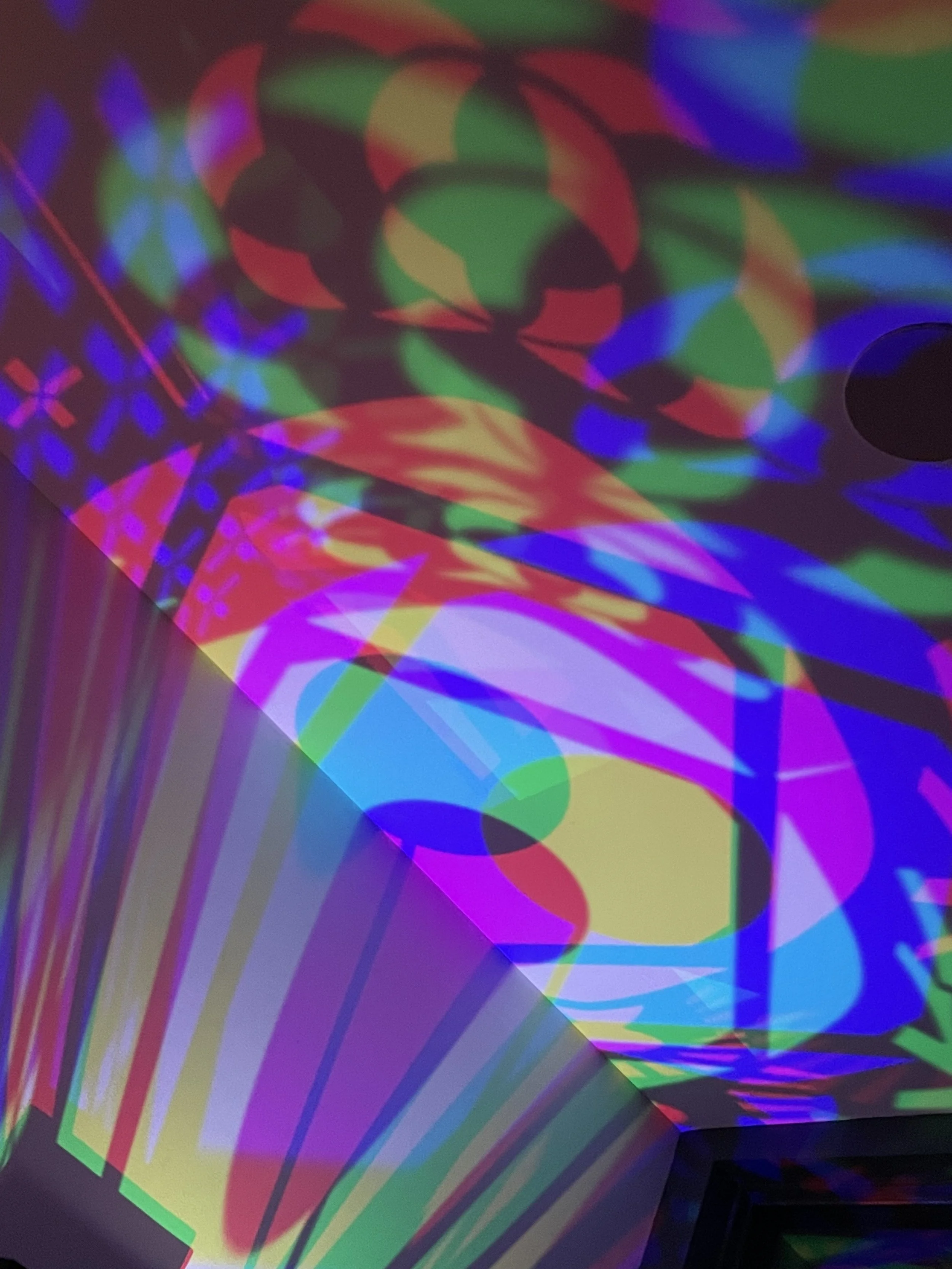Innovation
I have always been passionate about innovation and helping to make this world a better place. I find that my interests converge as I think about how to solve problems that improve the way people live.
ERC Night Light
This year I merged my interests in photonics, color theory, and interior design to create a custom night light that would cast rainbow shadows by using red, green, and blue lights and mixing them together. The night light was a decorative addition, with a Scandinavian Modern aesthetic, highlighting some of my design work.
The Prototypes
Before we made the wooden night light, we decided to do a cardboard prototype. When cut with the laser cutter, the cardboard literally burned up so we decided not to do that. Then we tried paper which we cut with a Cricut rather than a laser cutter so it didn’t burn. This worked and we used it as an effective prototype. Then, we put together the final wooden version which is made of walnut wood framing, cut with the laser cutter. The walls were made of thin sheets of wood cut with the Cricut. This was presented to my mom as an amazing Christmas present and I will forever remember her face as she opened it.
The Light & Art Design
Inside the night light, you can see six LEDs, half colored (red, green, and blue) and half white projecting out onto seven designs. These seven designs are: my signature, a silhouette of my face, two abstract designs, another sector of abstract designs, an abstract pattern of pluses, and the final design. The final design is slightly more complicated, when the lights aim onto a solid circle at the top of the night light, they cast shadows in a Venn diagram shape showing the mixing of cyan, magenta, and yellow to create the colors red, green, blue and black.
The Mixing of Colors
Here you can see the pattern night light makes. Let me tell you how these colors mix, remember the lights themselves are only red, green, and blue yet the lights projected can be almost any color.
Additive Mixing: Additive mixing is the mixing of lights themselves. The primary colors here are red, green, and blue which is why we use red, green, and blue as the colors of the nightlight. Red and green when mixed together will create yellow, that’s right, yellow. Green and blue when mixed together will create cyan but you may know this color as turquoise. Red and blue when mixed together create magenta but you may know this color as hot pink, fuchsia, neon pink, or simply just pink. When you mix all three colors in additive mixing, you will get white.
Subtractive Mixing: Subtractive mixing is perhaps even more confusing. This is what paints and inks use. You would be expecting me to teach that red, yellow, and blue are the essential primary colors and you can’t mix them from other colors. But, this is not exactly true. Primary color means any set of colors that can make a wide variety of other colors and that you can’t make any of the primary colors with any other colors in that set. This does not imply every color in existence. The subtractive primary colors I used are Cyan, Magenta, and Yellow. We described what you may know cyan and magenta as in the additive mixing section. Cyan and magenta when mixed together create blue. Thats right, blue. Cyan and yellow when mixed together create green. And, magenta and yellow when mixed together is perhaps the most surprising mixture of all, they create red. Thats right, red. Not orange. Once you mix all three colors together, you will get black.
You can see this mixing in the Venn Diagram projected by the ERC night light.



